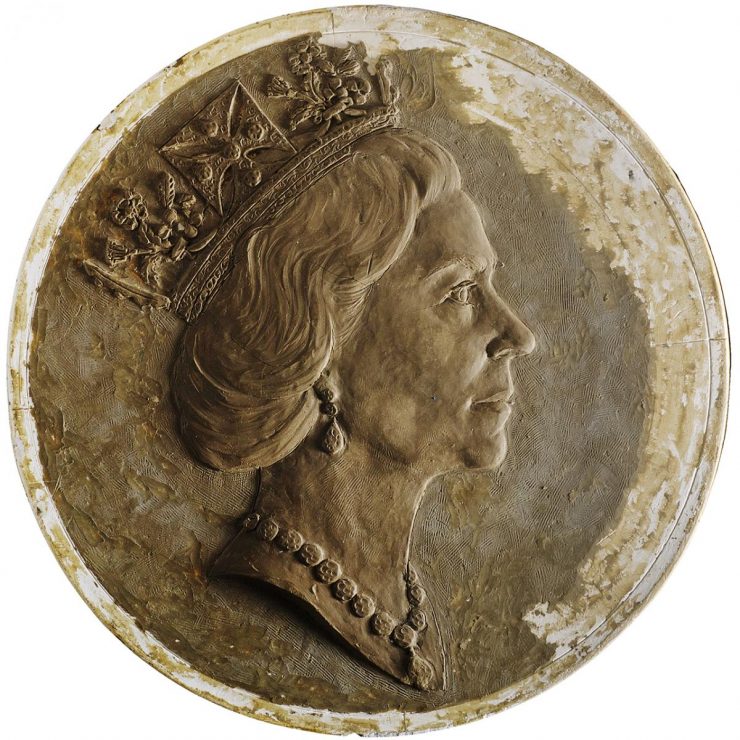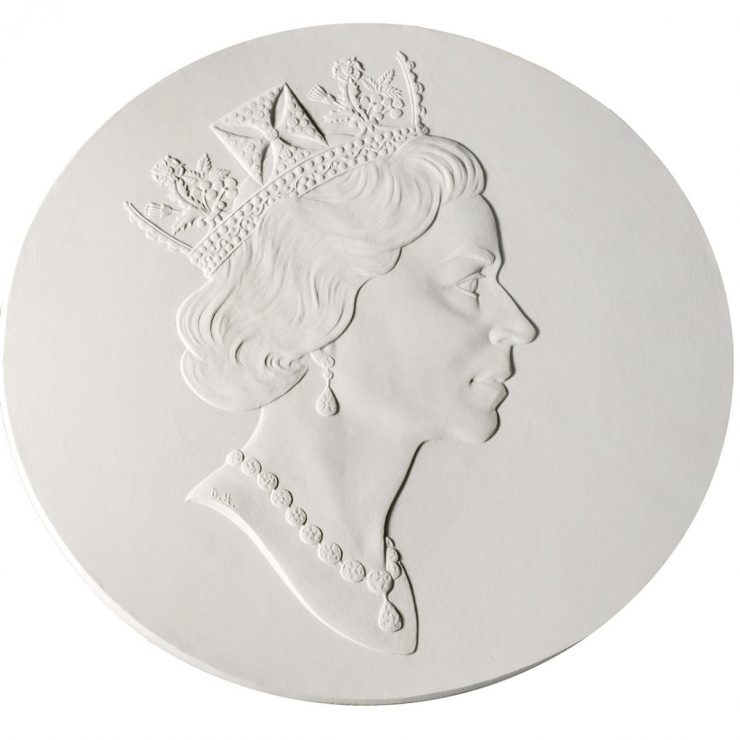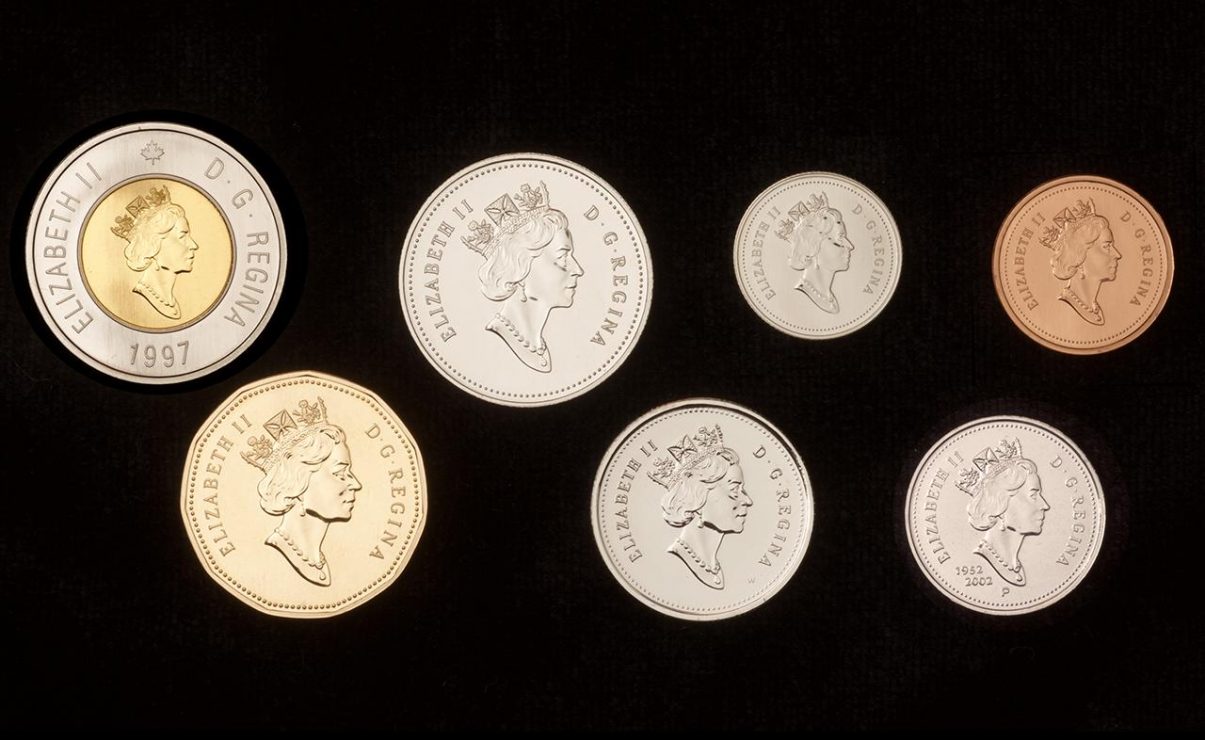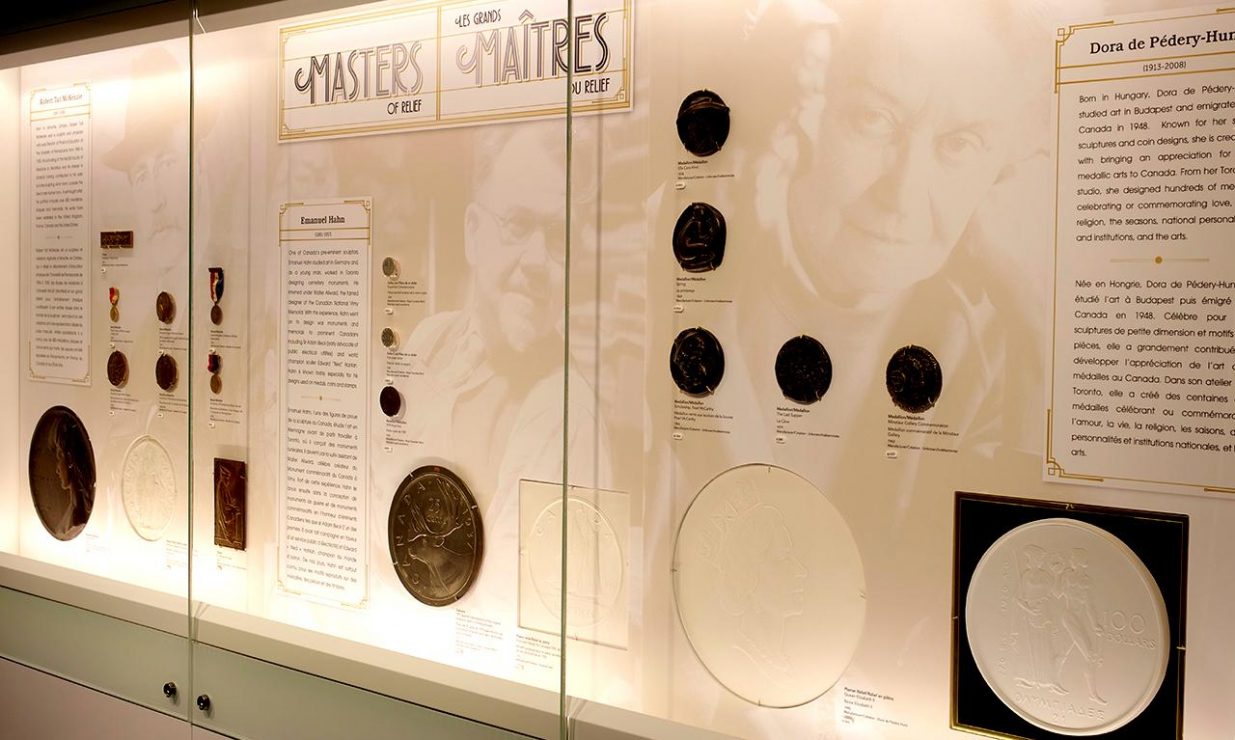Sculptor Dora de Pédery-Hunt
You will not see Dora de Pédery-Hunt’s signature on any coin, but you will see her initials on the Queen’s shoulder.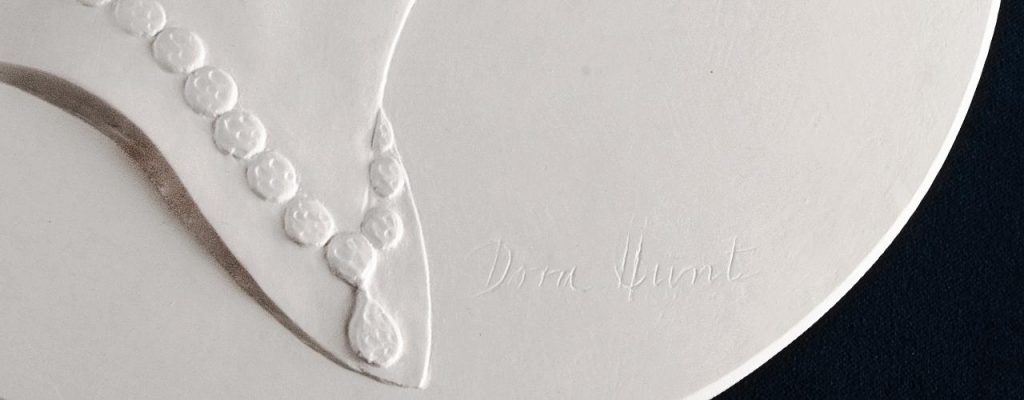
Limited Edition plaster reproduction of working model, #21 of 275. (NCC 2009.020.003)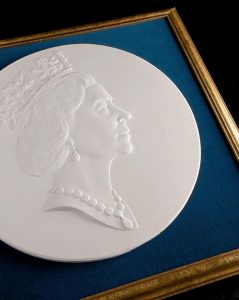
Dora de Pédery-Hunt’s work is as familiar as the change that jingles in your pocket. In all likelihood, you have come in contact with her work while using coins to pay for your morning cup of coffee. Dora de Pédery-Hunt was the first Canadian artist to design and sculpt an effigy of Queen Elizabeth II for coinage. Incidentally, this was the first time someone other than a British citizen had designed an official depiction of Queen Elizabeth II for this purpose.
When the Royal Canadian Mint (RCM) selected Dora’s design, she painstakingly began working on a clay model. All of the details had to be carefully considered, as the depth of the relief had to be suitable for producing coins. This model was then captured in plaster, where additional refinements could be made. Any errors could easily be corrected at this stage with the addition of more plaster. The size of the plaster is usually several times larger than the actual coin in order to capture all of the fine details.
At the time, there were many steps between the plaster model and the production of coins. Today, the process has been significantly refined. The plaster model is scanned in 3D and any final corrections or enhancements can be made digitally. Guided by this digital file, an engraving machine cuts the design into a piece of steel at the correct size of the coin. Known as a reduction punch, this piece of steel is then used to make the dies which will actually strike the coins. The tremendous pressure used to strike the coins wears down the dies, so the mint will periodically use the punch to create new dies.
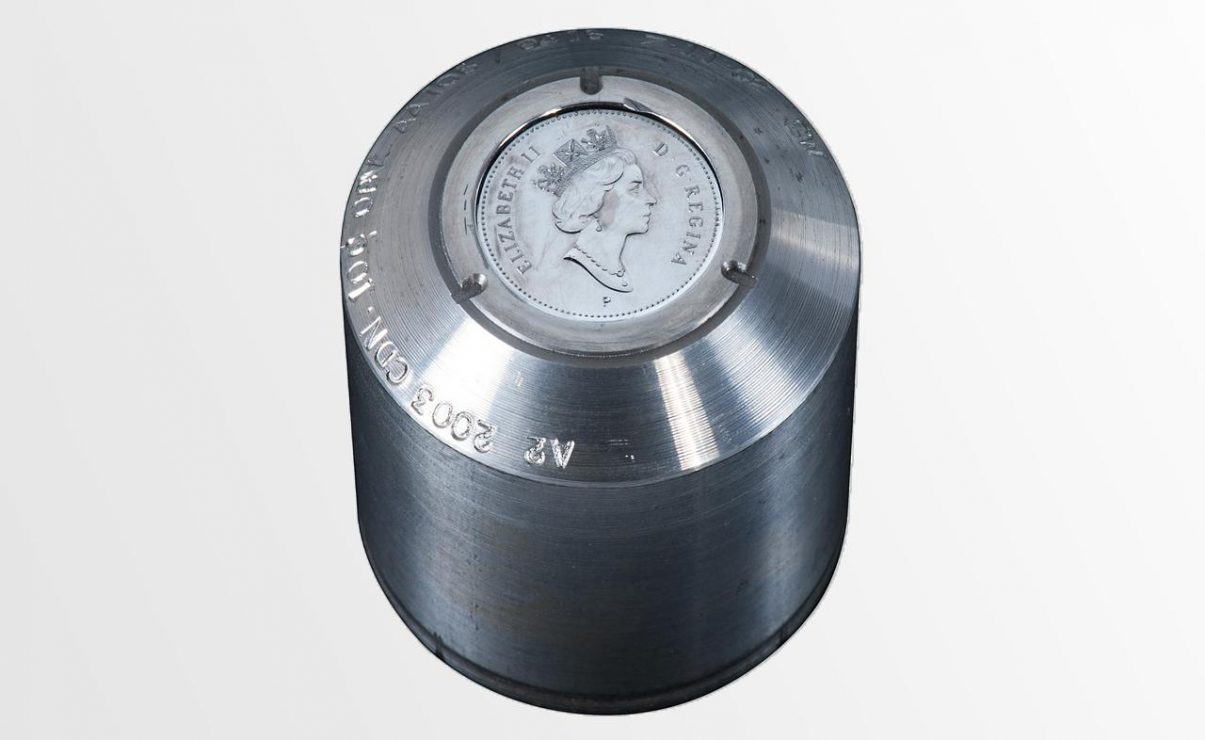
In 1999, the “P”, under the portrait on this punch, was added by the RCM to indicate a change in metal from nickel to multi-ply plated steel. (NCC 2010.058.006)
This portrait has appeared on all Canadian coins minted between 1990 and 2003.
The Museum Blog
A checkup on cheques
By: David Bergeron
With the continuing rise of e-transfers and electronic payments, people have been predicting the death of the humble cheque for decades. But it hasn’t happened yet.
The Scenes of Canada series $100 bill
By: Graham Iddon
Few of us ever get a chance to see a Scenes of Canada $100 bill. Which is a pity, because it is an example of great bank note design with even greater imagery by a master engraver.
Caring for your bank notes
By: Graham Iddon
Collecting paper money seems simple enough. But, paper is delicate stuff and demands a gentle touch.
Teaching math using money
By: Jonathan Jerome
From skip counting to making change, working with money is a great way for students to practice math skills.
Caring for your coins
By: Graham Iddon
Coin collecting can be a fun and fascinating hobby. But there are a few things you should know to keep your collection safe and in good condition. Because coins aren’t as robust as you might imagine.
Security is in the bank note
By: Graham Iddon
Security printing is a game of anticipating and responding to criminal threats. Counterfeiting is a game of anticipating and responding to bank note design. This cat and mouse relationship affects every aspect of a bank note.
Teaching art with currency
By: Adam Young
From design to final product, bank notes and coins can be used to explore and teach art, media and process.
